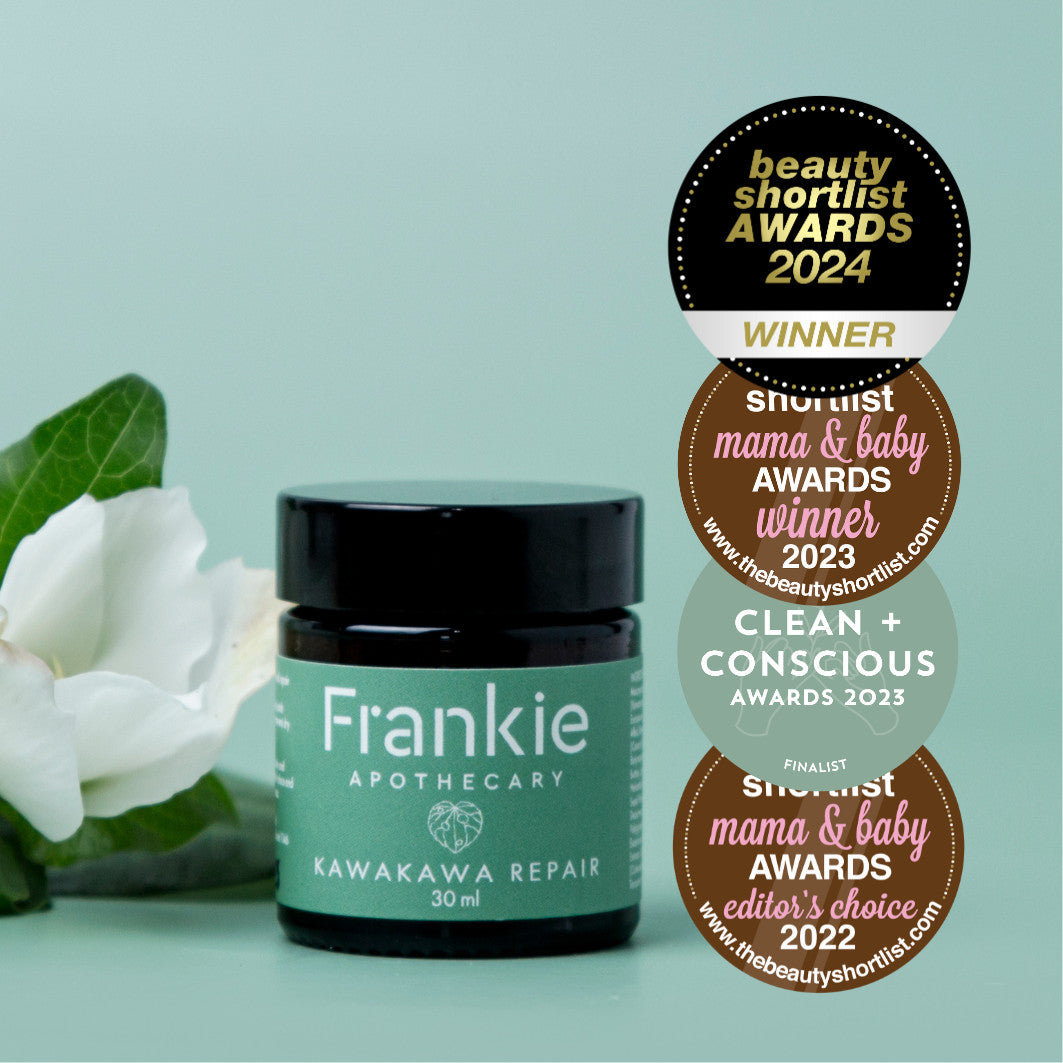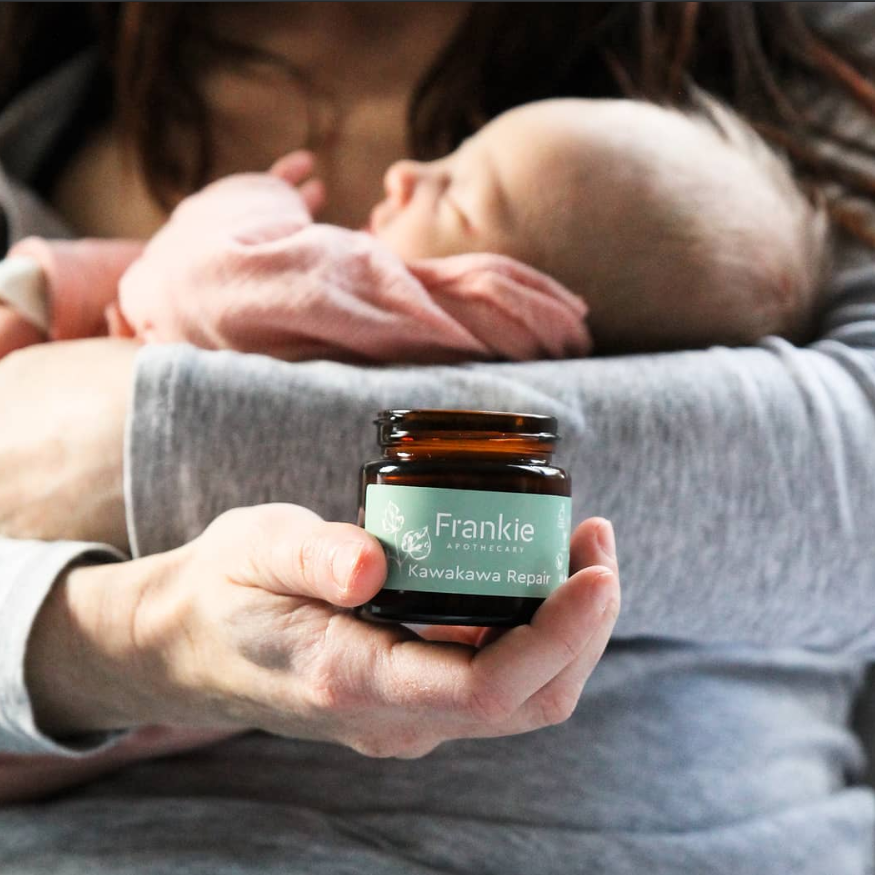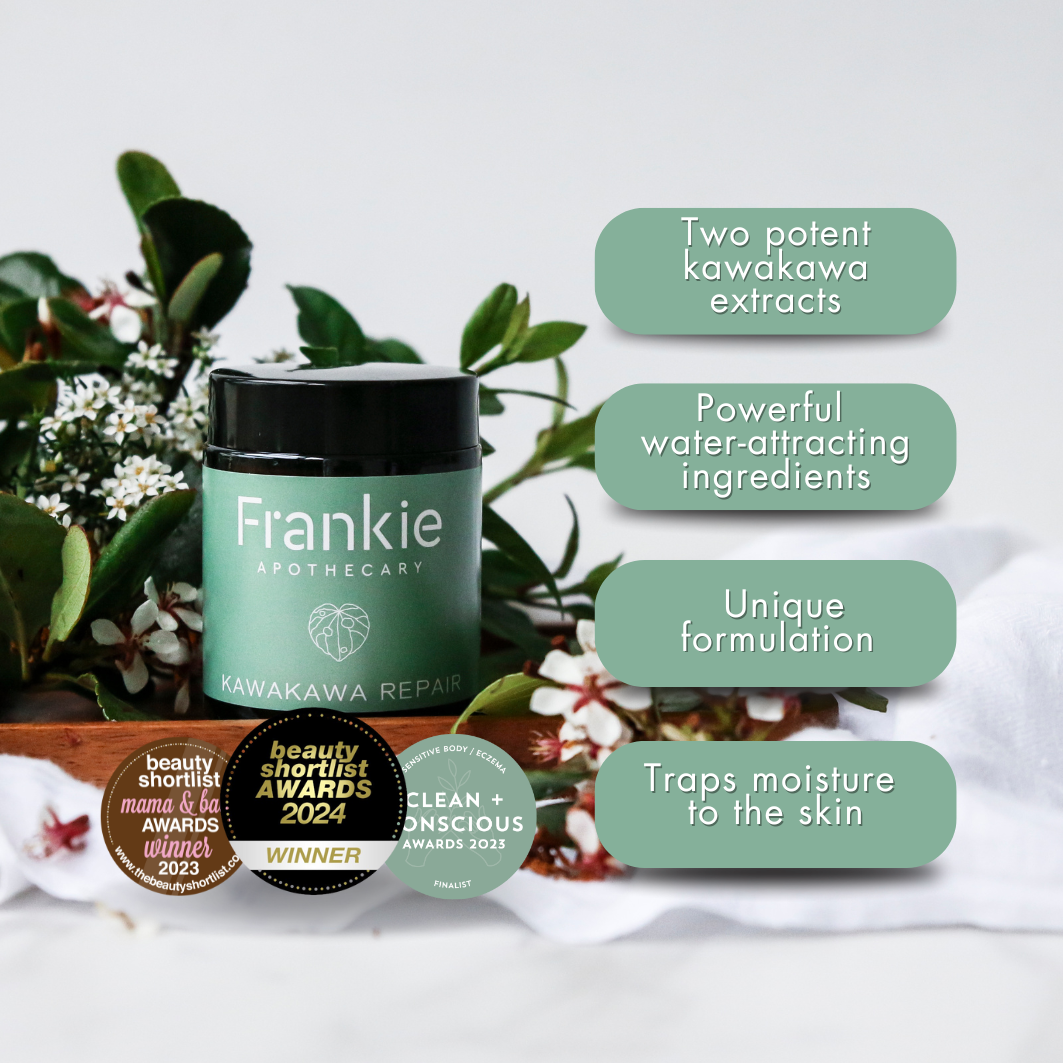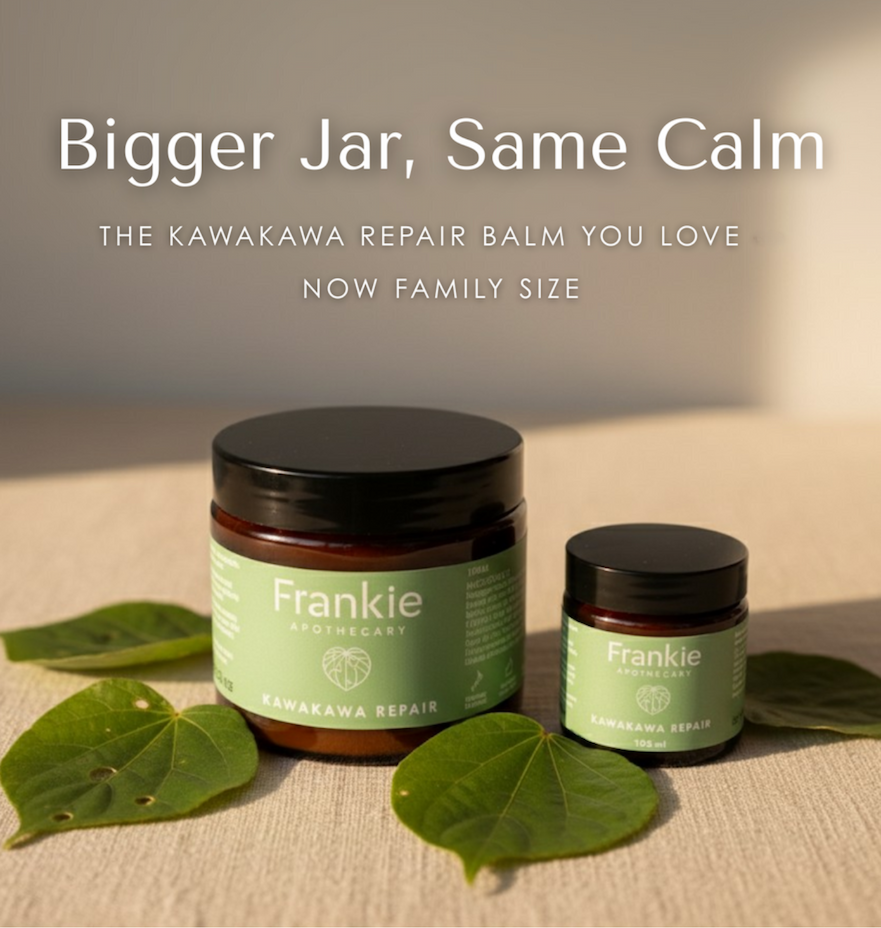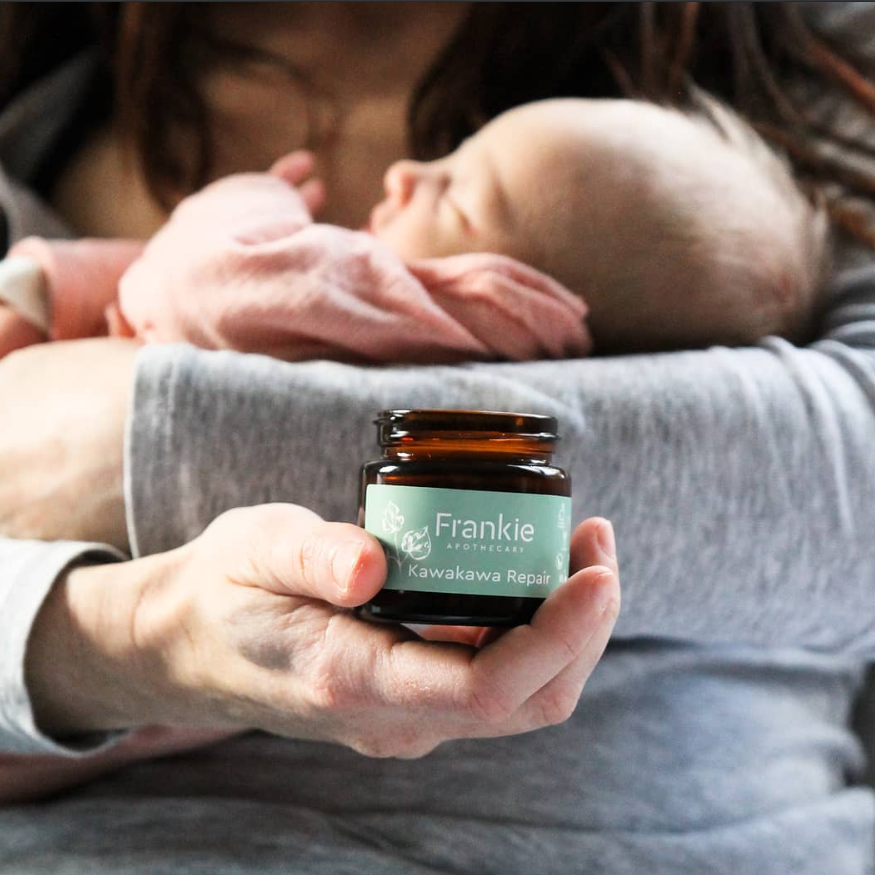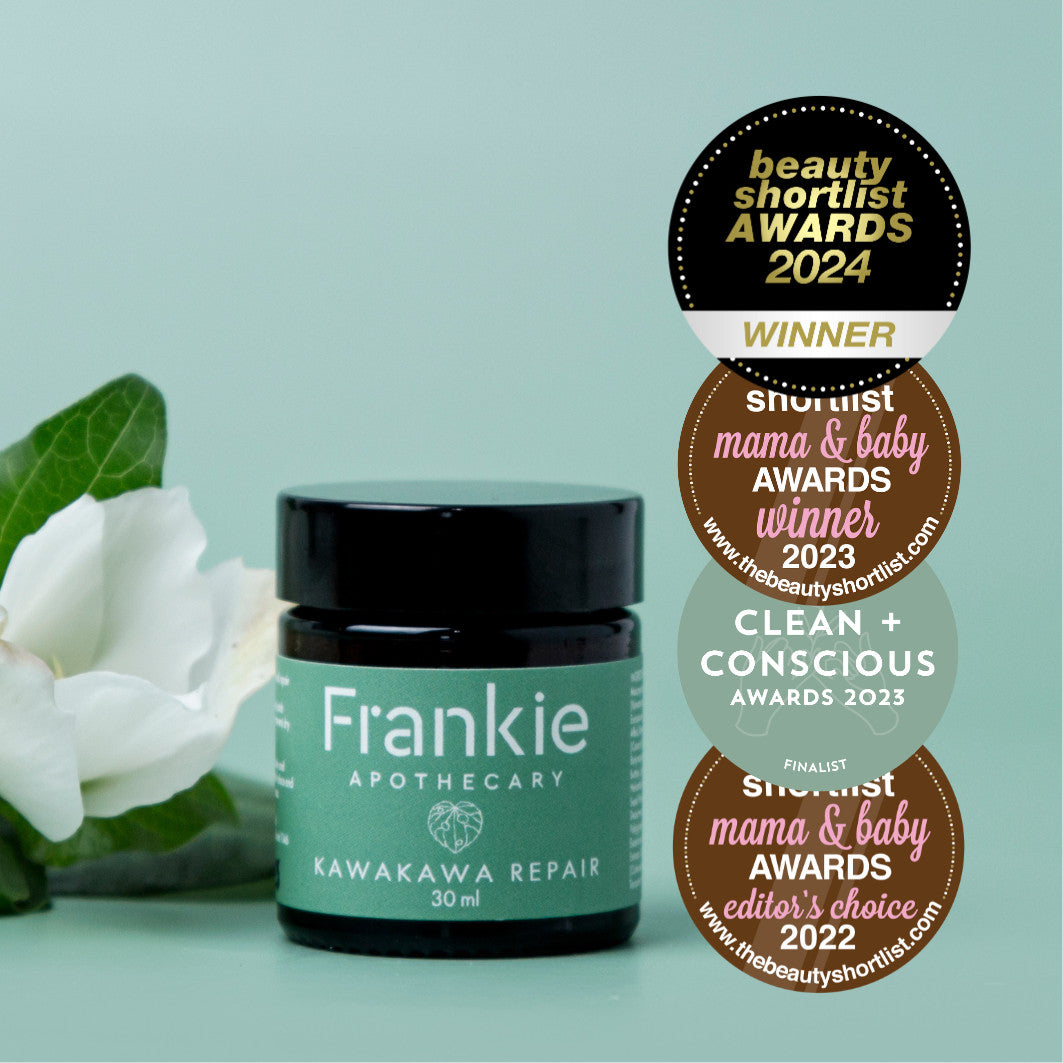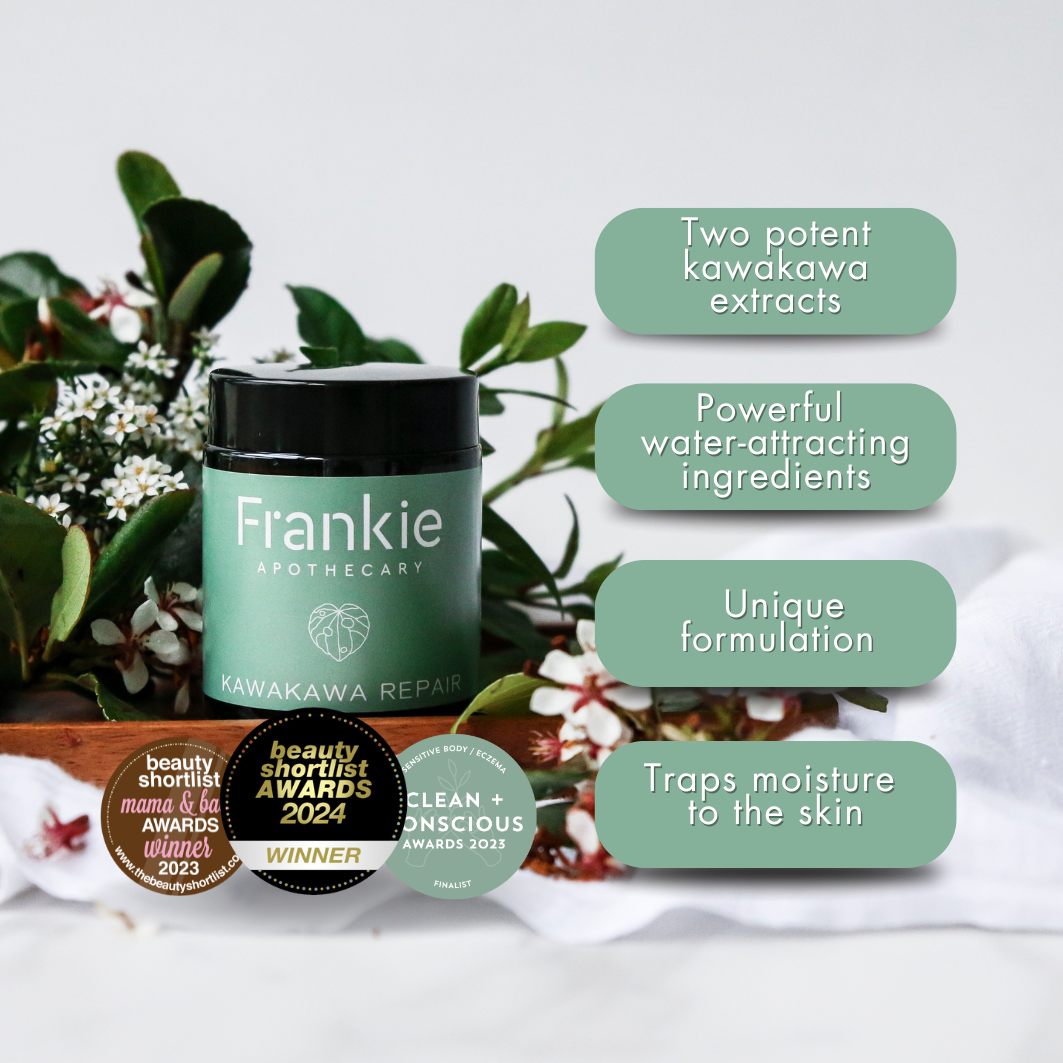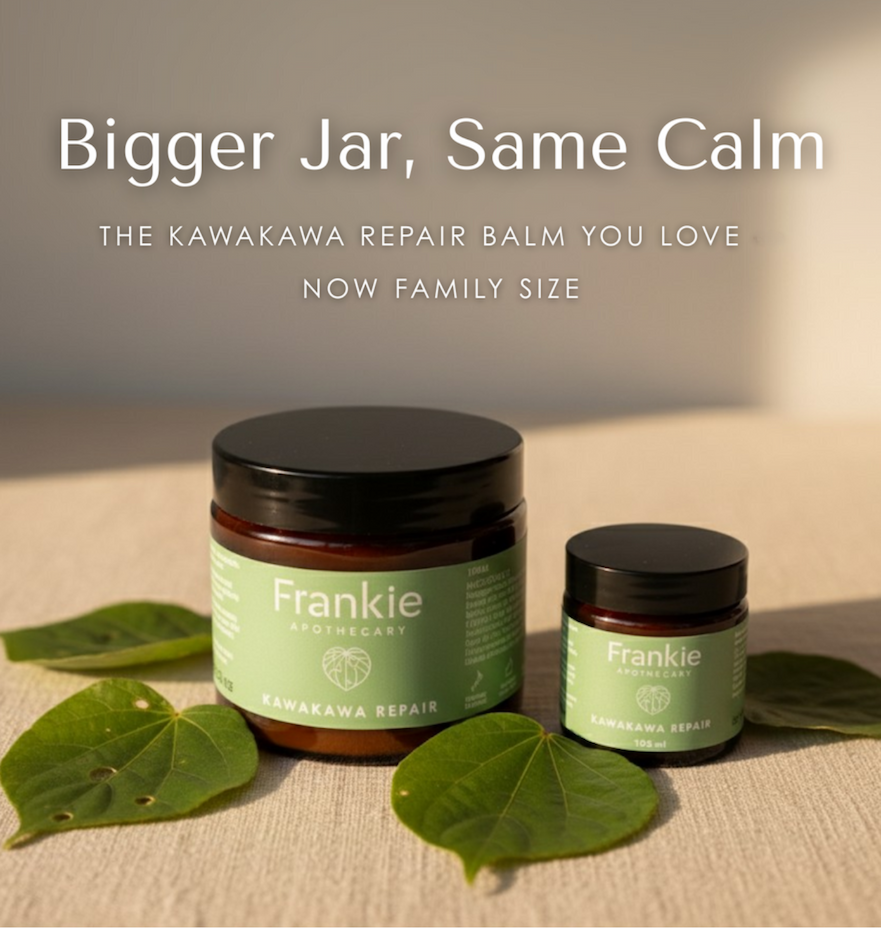Kawakawa has strong analgesic (pain reducing), anti-inflammatory, antimicrobial, and antioxidant properties.
This incredible shrub, latin name Piper excelsum, known by Māori for hundreds of years as Kawakawa, is native to New Zealand but fascinatingly is related to the Pacific Island plant, kava, and also to black pepper (Piper nigrum). Piperaceae, the family of plants to which these plants belong is widely used by cultures around the world for many traditional medicinal and culinary practices.
Kawakawa in Rongoā Māori
For many hundreds of years, Kawakawa has been used for a range of ailments including skin conditions and also as a tonic or infusion for digestive issues, toothaches, and genitourinary issues. Today, it's often incorporated into a balm to support issues like eczema, psoriasis, boils, bites, stings and grazes.
University of Auckland Scientists are currently co-designing clinical trials with Rongoā Māori practitioners to ascertain if the anti-inflammatory properties of kawakawa can reduce chronic inflammation in people with heart disease and diabetes or gut health issues, and specifically, validate the use of Kawakawa in Rongoā Māori through a Western lens.

Kawakawa in Modern Science
Affirming the relevance of Rongoā Māori in modern remedies, University of Auckland researchers used liquid chromatography and mass spectrometry to identify more than 60 biologically active compounds in kawakawa leaves.
Some of the most interesting biological actives identified in significant amounts are explained here:
Terpenes in Kawakawa Balm - potentially reduce pain and inflammation from eczema rashes
Of the 60+ biological compounds found in the Kawakawa, the most abundant was pellitorine, which has numbing effects on the body which potentially reduces pain. Scientists believe that pellitorine's role within the chemical pathways in the human body that reduce inflammation could help explain why kawakawa was used so much for pain-relief and inflammatory skin conditions like eczema in Rongoā Māori.
As well as being anti-inflammatory, pellitorine is a natural antithrombotic (may reduce blood clots, strokes, heart attacks), and has even demonstrated effectiveness against certain cancer and bacterial cell lines. "Pellitorine was extremely cytotoxic against human promyelocytic leukemia cells and breast cancer cells."
A psychoactive and anti-inflammatory compound, the terpene Myristicin found in Kawakawa is known to remove toxic inflammatory chemicals such as nitric oxides from human cells, and acts to reduce pain signals, making it perfect to treat eczema, insect bites, and inflamed swellings.
Myristicin possesses anti-inflammatory, analgesic (pain reducing), antibacterial, antifungal, antimicrobial, antioxidant and anticarcinogenic activity and is hepatoprotective (liver protective). It's even suggested that Myristicin can aid in skin protection against the sun's UV B rays - good thing we included it in our Sun Defense SPF 40+ natural sunblock!
"Myristicin's anti-inflammatory properties are related to its inhibition of:
- nitric oxide (can contribute chronic pain by enhancing nerve excitability in the central nervous system),
- cytokines (chemical 'messengers' that send pain signals),
- chemokines (signaling proteins (cytokines) that attract immune cells during inflammation, infection, and tissue repair), and
- growth factors in dsRNA-stimulated macrophages (modulate immune responses and tissue repair) via the calcium pathway."
Lignins in Kawakawa Balm - potentially reduce inflammation and accelerate skin repair
Lignins support skin repair and health through their antioxidant and antimicrobial properties, and their anti-inflammatory action and moisture retention properties promote wound healing. The two most well known lignins in our kawakawa balm are diayangambin and yangambin.
Immunosuppressant Diayangambin is useful for autoimmune disorders, and potentially also for eczema, where the immune system becomes dysregulated and overreacts to eczema triggers, leading to inflammation and a damaged skin barrier. Diayangambin is potentially a game changer for treating immune and inflammatory responses as indicated by this research, where swelling and inflammation were seen to be reduced.
Another lignin found in kawakawa, yangambin, has been shown to have potent anti-inflammatory effects on the human cardiovascular system.

Summarising why we love Kawakawa for Eczema Care
Eczema is a painful inflammation of the skin caused in part by the immune system being dysregulated and overreacting to eczema triggers. Eczema damages the skin's natural barrier, and can become much worse if it becomes infected.
- Kawakawa contains immune system suppressants which may act to reduce the initial over-reaction to the eczema trigger.
- It also contains anti-inflammatory actives to help control inflammation levels.
- It contains analgesics, numbing actives and nerve 'blockers' which can all act to reduce pain and also the pain signals sent to the brain.
- Kawakawa contains antifungals, antibacterials and antimicrobial actives which may help to protect against bacterial, fungal and microbial attack through the area of eczema damaged skin.
- Kawakawa also contains lignins and other antioxidants which help heal skin cells, aiding in restoring a healthy skin barrier.
What an amazing plant.

Kawakawa in food and drink
Kawakawa leaves can be used to make delicious teas and infusions with health benefits, or the peppery fruits and seeds of Kawakawa can be added judiciously to food (over-consumption of fruits can cause mild sedation due to the psychoactive compound myristicin, and can act as a laxative).
Kawakawa contains neurotransmitter dopamine, which has known health effects on the digestive system, providing the mechanism where drinking kawakawa tea can soothe gastrointestinal complaints in Rongoā Māori. Fascinatingly, dopamine can also help with sugar metabolism and insulin regulation, and The University of Auckland has observed reduced insulin levels in clinical trials on the use of kawakawa tea.
Piperchabamide, a bioactive alkaloid in Kawakawa, has gastroprotective properties that can also aid digestion and calm the stomach.
Scientists speculate that peppery flavour or plants in the Piperaceae family may improve the bioavailability of other pharmacologically active compounds, allowing other plants and spices to act more effectively.

Scientific references for Kawakawa balm actives
- Hodge, S.; Keesing, V.; Wratten, S.D.; Lövei, G.L.; Palmer, J.; Çilgi, T. Herbivore Damage and Leaf Loss in the New Zealand Pepper Tree (“kawakawa”; Macropiper excelsum; Piperaceae). N. Z. J. Ecol. 1998, 22, 173–180. [Google Scholar]
- Briggs, L.H. The Essential Oil of Macropiper excelsum (Kawakawa). J. Soc. Chem. Ind. 1941, 60, 210–212. [Google Scholar]
- Koia, J.H.; Shepherd, P. The Potential of Anti-Diabetic Rākau Rongoā (Māori Herbal Medicine) to Treat Type 2 Diabetes Mellitus (T2DM) Mate Huka: A Review. Front. Pharmacol. 2020, 11, 935. [Google Scholar]
- Russell, G.B.; Fenemore, P.G. New Lignans from Leaves of Macropiper excelsum. Phytochemistry 1973, 12, 1799–1803. [Google Scholar]
- Lei, J.; Burgess, E.J.; Richardson, A.T.B.; Hawkins, B.C.; Baird, S.K.; Smallfield, B.M.; Van Klink, J.W.; Perry, N.B. Cytotoxic Amides from Fruits of Kawakawa, Macropiper excelsum. Planta Med. 2015, 81, 1163–1168. [PubMed]



